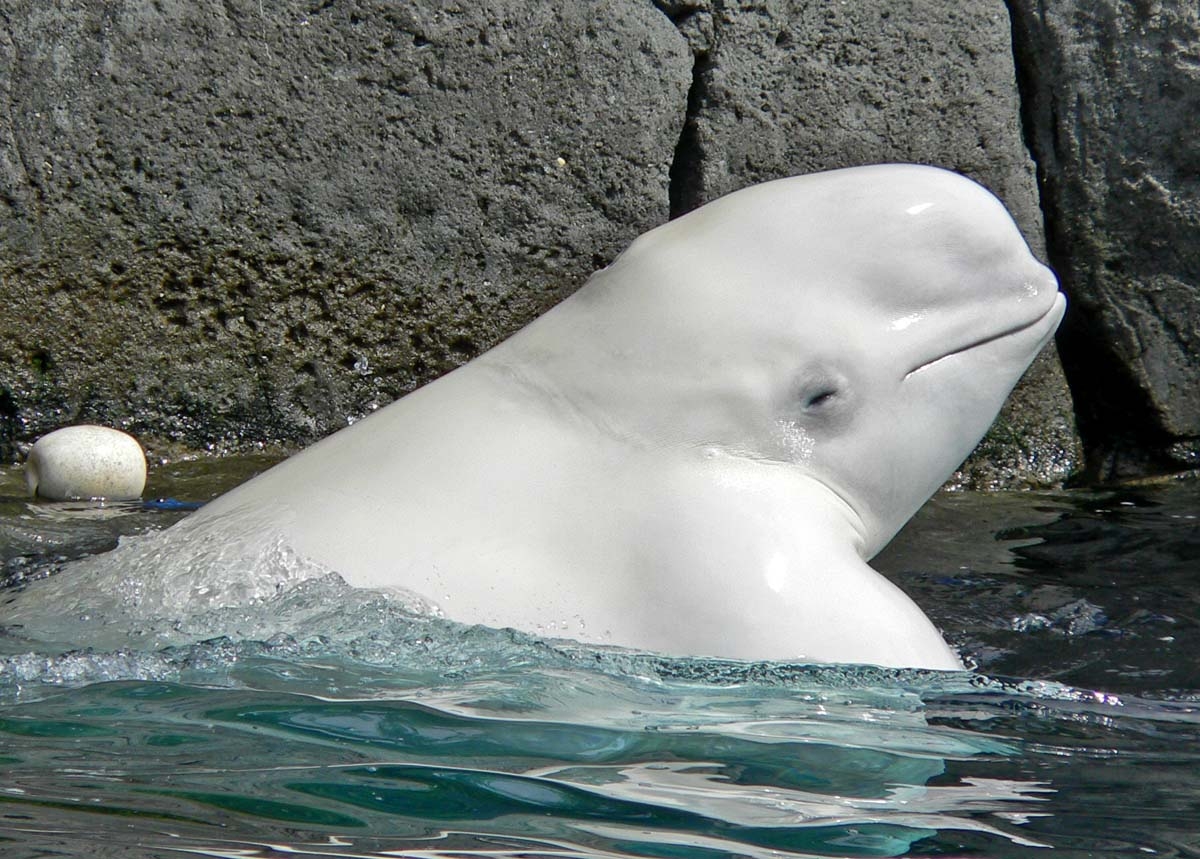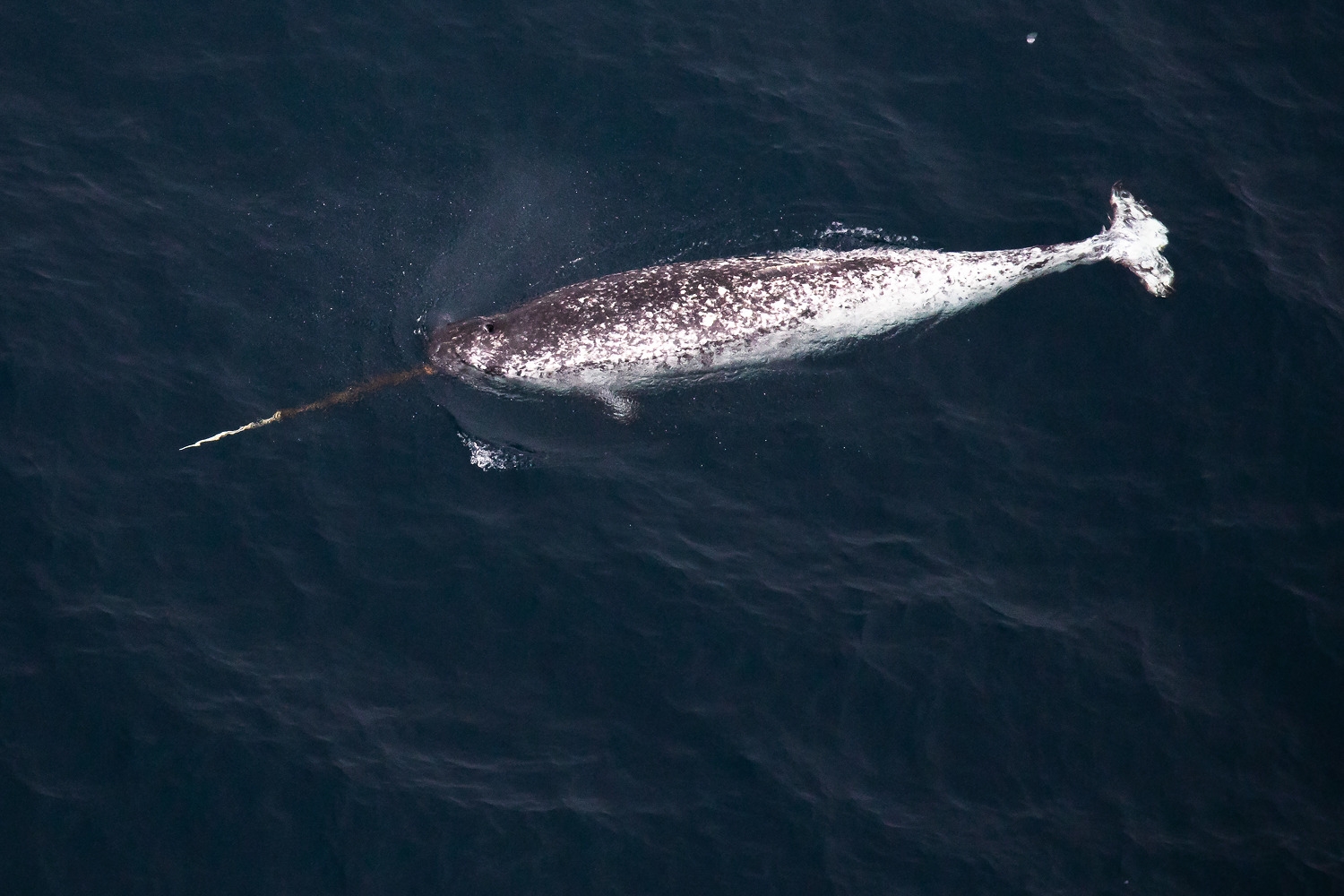Beluga Whale vs Narwhal: A Complete Comparison
When comparing the Beluga Whale vs Narwhal, these remarkable Arctic cetaceans share similar habitats but display striking differences in appearance and behavior. While Belugas are known for their distinctive white coloration and bulbous melon, Narwhals are immediately recognizable by their legendary spiral tusk, which can grow up to 8.8 feet (2.7 meters) long.
Both species are perfectly adapted to life in the frigid Arctic waters, but their evolutionary paths have led to unique specializations. Beluga whales typically reach lengths of 13-20 feet (4-6.1 meters), while Narwhals generally measure 13-16 feet (4-4.9 meters), not including their characteristic tusk.

© Stan Shebs / CC BY-SA 3.0
The Beluga whale, often called the “canary of the sea” due to its vocal nature, displays its characteristic pure white coloration and flexible neck, adaptations that help it navigate and hunt in ice-filled Arctic waters.

© пресс-служба ПАО "Газпром нефть" / CC BY-SA 4.0
The Narwhal, swimming in its natural habitat, showcases its distinctive tusk - actually an elongated canine tooth that grows through the upper lip. The mottled grey coloration provides excellent camouflage in the Arctic waters.
Key Differences Between Beluga Whales and Narwhals
| Feature | Beluga Whale | Narwhal |
|---|---|---|
| Appearance | Pure white; bulbous melon | Mottled grey; long spiral tusk |
| Size | 13-20 ft (4-6.1 m) | 13-16 ft (4-4.9 m) |
| Weight | 2,000-3,500 lbs (907-1,588 kg) | 1,760-3,530 lbs (800-1,600 kg) |
| Diet | Fish, squid, octopus | Greenland halibut, cod, squid |
| Distinctive Features | Flexible neck, no dorsal fin | Male’s spiral tusk up to 8.8 ft (2.7 m) |
| Social Behavior | Highly social, large pods | Smaller pods, more solitary |
Habitat and Distribution
Both species are Arctic specialists, but their ranges differ slightly. Beluga whales have a broader distribution, found in coastal waters around the Arctic Circle, including Hudson Bay, Alaska, and northern Russia. Narwhals maintain a more restricted range, primarily inhabiting the waters around Greenland and northern Canada.
Hunting and Feeding Behavior
Belugas and Narwhals employ different hunting strategies despite sharing similar Arctic prey species. Belugas use their flexible necks and echolocation to track fish in complex ice environments, while Narwhals perform deep dives, often exceeding 5,000 feet (1,524 meters), to catch Greenland halibut and other prey.
Social Structure and Communication
Beluga Whale Social Behavior
- Form pods of 2-25 individuals
- Highly vocal, with complex communication
- Strong mother-calf bonds lasting several years
- Known for playful behavior and social learning
Narwhal Social Behavior
- Typically travel in pods of 5-10
- More mysterious social structure
- Less vocal than belugas
- Strong seasonal migration patterns
Conservation Status and Threats
Both species face similar challenges from climate change and human activities. The melting Arctic ice affects their habitat, while industrial development and shipping routes disrupt their traditional migration patterns. Current conservation efforts focus on protecting critical habitats and maintaining sustainable hunting practices among indigenous communities.
Who Would Win in a Confrontation?
While direct confrontations between Belugas and Narwhals are rare, their different adaptations suggest different defensive capabilities. Narwhals possess the formidable tusk, but it’s primarily used for social displays and possibly sensing environmental conditions. Belugas, with their more robust build and superior maneuverability, might have an advantage in close-quarter situations. However, both species typically avoid aggressive interactions, preferring to flee from potential threats.
Evolutionary History and Adaptation
These Arctic specialists evolved from a common ancestor but developed different survival strategies. Belugas adapted for versatility in shallow coastal waters, while Narwhals specialized in deep-water hunting and extreme cold tolerance. Their divergent evolution showcases the remarkable diversity of cetacean adaptation to Arctic conditions.
Both the Beluga whale and Narwhal represent extraordinary examples of Arctic adaptation, each finding unique solutions to the challenges of life in one of Earth’s most demanding environments. Their continued survival depends on our understanding and protection of their rapidly changing Arctic habitat.









